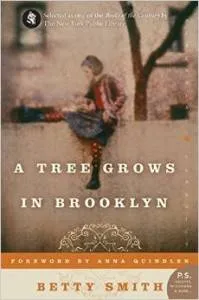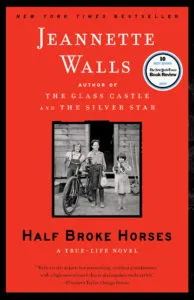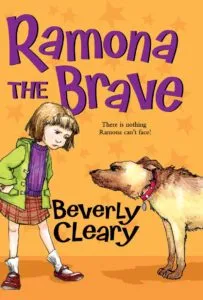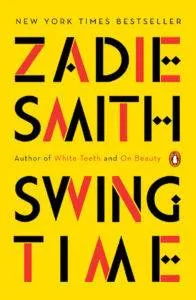
Teaching Advice Gleaned from Books
This content contains affiliate links. When you buy through these links, we may earn an affiliate commission.
This year is my tenth in an elementary school classroom. That means ten years of teaching letters and letter sounds, trying shoes, singing directions to catch students’ attention, and telling students (more than once) not to lick the trashcan.
Teaching is exhilarating, exhausting, and empowering almost every day. For example, I teach at a Catholic school and take my Junior Kindergarten students to mass on a weekly basis. If I can teach 13 four and five-years-olds how to genuflect, listen, kneel, and sit still during mass, I can do anything!
To get anything accomplished in the classroom, teachers need a collection of advice and tips honed from other teachers, pinned from Pinterest, and, for me, gleaned from favorite books.

 “Technically, a child was permitted to leave the room if he asked permission. There was a system of coy evasion…But the harassed and unfeeling teachers assured each other that this was just a subterfuge for a child to get out of the classroom for a little while.” – Betty Smith, A Tree Grows in Brooklyn
A Tree Grows in Brooklyn by Betty Smith is a heartbreaking read for any teacher or parent. Francie Nolan began attending school in 1910 and found it “brutalizing” with cruel teachers, abusive administrators, and 3,000 students in a building designed for 1,000. Francie’s biggest indiginity involved “leaving the room.” Her teacher expected her to “go” before she came to school in the morning or during lunch or recess. Francie quickly found that the “most brutalized” students patrolled the restrooms, blocking the way for younger students and charging a penny to pee. Unable to pay the fine and ignored by her teacher, Francie returned to her classroom and had an accident in her seat. Ashamed and afraid to tell her teacher, Francie shivered in her wet stockings for the rest of the school day.
I know it sounds dramatic, but I keep this scene in mind when students ask to use the restroom for what seems like the tenth time before 8:30 a.m. With my young students, I remind myself not to argue or question. Unless it is disruptive or in the middle of a lesson, I just let them go. I create restroom plans for the ones who abuse this system and work to eliminate the bladder battles. It makes life so much easier for all involved!
“Technically, a child was permitted to leave the room if he asked permission. There was a system of coy evasion…But the harassed and unfeeling teachers assured each other that this was just a subterfuge for a child to get out of the classroom for a little while.” – Betty Smith, A Tree Grows in Brooklyn
A Tree Grows in Brooklyn by Betty Smith is a heartbreaking read for any teacher or parent. Francie Nolan began attending school in 1910 and found it “brutalizing” with cruel teachers, abusive administrators, and 3,000 students in a building designed for 1,000. Francie’s biggest indiginity involved “leaving the room.” Her teacher expected her to “go” before she came to school in the morning or during lunch or recess. Francie quickly found that the “most brutalized” students patrolled the restrooms, blocking the way for younger students and charging a penny to pee. Unable to pay the fine and ignored by her teacher, Francie returned to her classroom and had an accident in her seat. Ashamed and afraid to tell her teacher, Francie shivered in her wet stockings for the rest of the school day.
I know it sounds dramatic, but I keep this scene in mind when students ask to use the restroom for what seems like the tenth time before 8:30 a.m. With my young students, I remind myself not to argue or question. Unless it is disruptive or in the middle of a lesson, I just let them go. I create restroom plans for the ones who abuse this system and work to eliminate the bladder battles. It makes life so much easier for all involved!
 In The Water is Wide, Pat Conroy writes about his year teaching at a school on remote Yamacraw Island, South Carolina. Upon arriving at the school, Conroy quickly learns that his 10 – 13 year old students are illiterate. He laments,”Sweet little Jesus…these kids don’t know crap.” Taught in the lower grades by a leather-strap wielding teacher, they struggle to make progress learning the building blocks of education.
Conroy employs untraditional teaching practices and introduces the students to swimming lessons, music, Halloween, and life outside of Yamacraw. Throughout the book, he struggles with “white guilt” and the effects of segregation, racism, and illiteracy. I definitely do not agree with all of Conroy’s teaching methods. Also, while I understand his diction and dialect choices, I find many scenes and dialogues uncomfortable to read.
With that aside, I still think of this quote often. It is very easy to pull out the same lesson plans and projects from the year before. While I recycle many ideas, I build many new lessons and learning experiences to keep my current group of students engaged and excited about learning. One group likes to build while another prefers to paint.
In The Water is Wide, Pat Conroy writes about his year teaching at a school on remote Yamacraw Island, South Carolina. Upon arriving at the school, Conroy quickly learns that his 10 – 13 year old students are illiterate. He laments,”Sweet little Jesus…these kids don’t know crap.” Taught in the lower grades by a leather-strap wielding teacher, they struggle to make progress learning the building blocks of education.
Conroy employs untraditional teaching practices and introduces the students to swimming lessons, music, Halloween, and life outside of Yamacraw. Throughout the book, he struggles with “white guilt” and the effects of segregation, racism, and illiteracy. I definitely do not agree with all of Conroy’s teaching methods. Also, while I understand his diction and dialect choices, I find many scenes and dialogues uncomfortable to read.
With that aside, I still think of this quote often. It is very easy to pull out the same lesson plans and projects from the year before. While I recycle many ideas, I build many new lessons and learning experiences to keep my current group of students engaged and excited about learning. One group likes to build while another prefers to paint.
 Yes, teachers are underpaid and overworked. I taught in a school for a year with major budget cuts, no janitors, and only two resource teachers. During that year, I arrived early to set up my lessons, served breakfast in my classroom at 7:30 a.m., taught all day, did lunch/recess duty, and then vacuumed my classroom at the end of the day. No breaks, no planning period, and barely a moment to use the restroom. I read this quote a lot that year – at least the administration didn’t ask me to drive the school bus!
Yes, teachers are underpaid and overworked. I taught in a school for a year with major budget cuts, no janitors, and only two resource teachers. During that year, I arrived early to set up my lessons, served breakfast in my classroom at 7:30 a.m., taught all day, did lunch/recess duty, and then vacuumed my classroom at the end of the day. No breaks, no planning period, and barely a moment to use the restroom. I read this quote a lot that year – at least the administration didn’t ask me to drive the school bus!
 Before asking to use the stapler, a large dog chased Ramona on the way to school. She threw her shoe at the dog, and then spent the rest of the school day without a shoe. During recess, she constructed a slipper out of paper towels and then bravely asked her sister’s teacher, Mr. Cardoza, if she could borrow a stapler to finish cobbling her shoe.
In this scene, Ramona sums up three very different teachers. In my room, I strive to be more like Mr. Cardoza. I often engineer a lesson and expect it to go one way, when students take the information and materials offered and go in another more exciting direction. At times, I act like Miss Binney and continuously help students. I remind myself to channel Mr. Cardoza, to step back, and, wherever possible, let my students make their own discoveries, trusting that they can be in charge of their own learning.
Before asking to use the stapler, a large dog chased Ramona on the way to school. She threw her shoe at the dog, and then spent the rest of the school day without a shoe. During recess, she constructed a slipper out of paper towels and then bravely asked her sister’s teacher, Mr. Cardoza, if she could borrow a stapler to finish cobbling her shoe.
In this scene, Ramona sums up three very different teachers. In my room, I strive to be more like Mr. Cardoza. I often engineer a lesson and expect it to go one way, when students take the information and materials offered and go in another more exciting direction. At times, I act like Miss Binney and continuously help students. I remind myself to channel Mr. Cardoza, to step back, and, wherever possible, let my students make their own discoveries, trusting that they can be in charge of their own learning.
 “We knew that they, in their own time, had feared school, just as we did now, feared the arbitrary rules…the baffling obsession with quiet, the incessant correcting of their original patois or cockney, the sense they could never do anything right anyway.” -Zadie Smith, Swing Time
In this scene, the unnamed narrator attempts to explain why her classmates’ mothers do not attend Back to School Night or other school functions. She shows that the mothers are not “lazy” about their children’s education, but instead are still reeling from their own negative classroom experiences. I am very fortunate with the parents at my current school. They frequently volunteer to help where needed and fill all of the little chairs in my classroom on Back to School Night.
I keep this quote bookmarked because I strive to create a positive atmosphere in my classroom, one that is the opposite of the unnaturally quiet, oppressive classroom described above. I let students converse and chatter throughout the school day. It is ridiculous to expect people (especially small ones) to be quiet all day long. We practice using quiet voices during lunchtime and whisper voices while working. My students and I create classroom rules together, discussing their purposes as we go along. In twenty or thirty years, if my current students’ children come through my doors, I hope their parents will still feel comfortable in my classroom.
While I don’t think you can find these quotes on a “cute” teacher t-shirt or in swirly writing on a canvas purchased from Etsy, these are some of the quotes that help me as a teacher. If you are a teacher, what are some bookish quotes that drive you?
“We knew that they, in their own time, had feared school, just as we did now, feared the arbitrary rules…the baffling obsession with quiet, the incessant correcting of their original patois or cockney, the sense they could never do anything right anyway.” -Zadie Smith, Swing Time
In this scene, the unnamed narrator attempts to explain why her classmates’ mothers do not attend Back to School Night or other school functions. She shows that the mothers are not “lazy” about their children’s education, but instead are still reeling from their own negative classroom experiences. I am very fortunate with the parents at my current school. They frequently volunteer to help where needed and fill all of the little chairs in my classroom on Back to School Night.
I keep this quote bookmarked because I strive to create a positive atmosphere in my classroom, one that is the opposite of the unnaturally quiet, oppressive classroom described above. I let students converse and chatter throughout the school day. It is ridiculous to expect people (especially small ones) to be quiet all day long. We practice using quiet voices during lunchtime and whisper voices while working. My students and I create classroom rules together, discussing their purposes as we go along. In twenty or thirty years, if my current students’ children come through my doors, I hope their parents will still feel comfortable in my classroom.
While I don’t think you can find these quotes on a “cute” teacher t-shirt or in swirly writing on a canvas purchased from Etsy, these are some of the quotes that help me as a teacher. If you are a teacher, what are some bookish quotes that drive you?

Tip #1: Whenever possible, just Let Them Use the Restroom
 “Technically, a child was permitted to leave the room if he asked permission. There was a system of coy evasion…But the harassed and unfeeling teachers assured each other that this was just a subterfuge for a child to get out of the classroom for a little while.” – Betty Smith, A Tree Grows in Brooklyn
A Tree Grows in Brooklyn by Betty Smith is a heartbreaking read for any teacher or parent. Francie Nolan began attending school in 1910 and found it “brutalizing” with cruel teachers, abusive administrators, and 3,000 students in a building designed for 1,000. Francie’s biggest indiginity involved “leaving the room.” Her teacher expected her to “go” before she came to school in the morning or during lunch or recess. Francie quickly found that the “most brutalized” students patrolled the restrooms, blocking the way for younger students and charging a penny to pee. Unable to pay the fine and ignored by her teacher, Francie returned to her classroom and had an accident in her seat. Ashamed and afraid to tell her teacher, Francie shivered in her wet stockings for the rest of the school day.
I know it sounds dramatic, but I keep this scene in mind when students ask to use the restroom for what seems like the tenth time before 8:30 a.m. With my young students, I remind myself not to argue or question. Unless it is disruptive or in the middle of a lesson, I just let them go. I create restroom plans for the ones who abuse this system and work to eliminate the bladder battles. It makes life so much easier for all involved!
“Technically, a child was permitted to leave the room if he asked permission. There was a system of coy evasion…But the harassed and unfeeling teachers assured each other that this was just a subterfuge for a child to get out of the classroom for a little while.” – Betty Smith, A Tree Grows in Brooklyn
A Tree Grows in Brooklyn by Betty Smith is a heartbreaking read for any teacher or parent. Francie Nolan began attending school in 1910 and found it “brutalizing” with cruel teachers, abusive administrators, and 3,000 students in a building designed for 1,000. Francie’s biggest indiginity involved “leaving the room.” Her teacher expected her to “go” before she came to school in the morning or during lunch or recess. Francie quickly found that the “most brutalized” students patrolled the restrooms, blocking the way for younger students and charging a penny to pee. Unable to pay the fine and ignored by her teacher, Francie returned to her classroom and had an accident in her seat. Ashamed and afraid to tell her teacher, Francie shivered in her wet stockings for the rest of the school day.
I know it sounds dramatic, but I keep this scene in mind when students ask to use the restroom for what seems like the tenth time before 8:30 a.m. With my young students, I remind myself not to argue or question. Unless it is disruptive or in the middle of a lesson, I just let them go. I create restroom plans for the ones who abuse this system and work to eliminate the bladder battles. It makes life so much easier for all involved!
Tip #2: Always Look For New Ideas
“The teacher must always be on the attack, looking for new ideas, changing worn-out tactics, and never, ever falling into patterns that lead to student ennui.” – Pat Conroy, The Water is Wide In The Water is Wide, Pat Conroy writes about his year teaching at a school on remote Yamacraw Island, South Carolina. Upon arriving at the school, Conroy quickly learns that his 10 – 13 year old students are illiterate. He laments,”Sweet little Jesus…these kids don’t know crap.” Taught in the lower grades by a leather-strap wielding teacher, they struggle to make progress learning the building blocks of education.
Conroy employs untraditional teaching practices and introduces the students to swimming lessons, music, Halloween, and life outside of Yamacraw. Throughout the book, he struggles with “white guilt” and the effects of segregation, racism, and illiteracy. I definitely do not agree with all of Conroy’s teaching methods. Also, while I understand his diction and dialect choices, I find many scenes and dialogues uncomfortable to read.
With that aside, I still think of this quote often. It is very easy to pull out the same lesson plans and projects from the year before. While I recycle many ideas, I build many new lessons and learning experiences to keep my current group of students engaged and excited about learning. One group likes to build while another prefers to paint.
In The Water is Wide, Pat Conroy writes about his year teaching at a school on remote Yamacraw Island, South Carolina. Upon arriving at the school, Conroy quickly learns that his 10 – 13 year old students are illiterate. He laments,”Sweet little Jesus…these kids don’t know crap.” Taught in the lower grades by a leather-strap wielding teacher, they struggle to make progress learning the building blocks of education.
Conroy employs untraditional teaching practices and introduces the students to swimming lessons, music, Halloween, and life outside of Yamacraw. Throughout the book, he struggles with “white guilt” and the effects of segregation, racism, and illiteracy. I definitely do not agree with all of Conroy’s teaching methods. Also, while I understand his diction and dialect choices, I find many scenes and dialogues uncomfortable to read.
With that aside, I still think of this quote often. It is very easy to pull out the same lesson plans and projects from the year before. While I recycle many ideas, I build many new lessons and learning experiences to keep my current group of students engaged and excited about learning. One group likes to build while another prefers to paint.
Tip #3: Be Prepared to Do More Than Just Teach
“I’d teach the whole bunch by myself, take them all home, return to the school and do the janitoring, then head back to the ranch.” -Jeannette Walls, Half Broke Horses Yes, teachers are underpaid and overworked. I taught in a school for a year with major budget cuts, no janitors, and only two resource teachers. During that year, I arrived early to set up my lessons, served breakfast in my classroom at 7:30 a.m., taught all day, did lunch/recess duty, and then vacuumed my classroom at the end of the day. No breaks, no planning period, and barely a moment to use the restroom. I read this quote a lot that year – at least the administration didn’t ask me to drive the school bus!
Yes, teachers are underpaid and overworked. I taught in a school for a year with major budget cuts, no janitors, and only two resource teachers. During that year, I arrived early to set up my lessons, served breakfast in my classroom at 7:30 a.m., taught all day, did lunch/recess duty, and then vacuumed my classroom at the end of the day. No breaks, no planning period, and barely a moment to use the restroom. I read this quote a lot that year – at least the administration didn’t ask me to drive the school bus!
Tip #4: Trust your students as much as possible
“‘Certainly,’ [Mr. Cardoza] said and strode to his desk for the stapler, which he handed to her without question. Mrs. Griggs would have said, ‘Tell me why you want it, Ramona.’ Miss Binney would have said, ‘Won’t you let me help you with it?’ Mr. Cardoza closed the door, leaving Ramona in the privacy of the hall.” -Beverly Cleary, Ramona the Brave Before asking to use the stapler, a large dog chased Ramona on the way to school. She threw her shoe at the dog, and then spent the rest of the school day without a shoe. During recess, she constructed a slipper out of paper towels and then bravely asked her sister’s teacher, Mr. Cardoza, if she could borrow a stapler to finish cobbling her shoe.
In this scene, Ramona sums up three very different teachers. In my room, I strive to be more like Mr. Cardoza. I often engineer a lesson and expect it to go one way, when students take the information and materials offered and go in another more exciting direction. At times, I act like Miss Binney and continuously help students. I remind myself to channel Mr. Cardoza, to step back, and, wherever possible, let my students make their own discoveries, trusting that they can be in charge of their own learning.
Before asking to use the stapler, a large dog chased Ramona on the way to school. She threw her shoe at the dog, and then spent the rest of the school day without a shoe. During recess, she constructed a slipper out of paper towels and then bravely asked her sister’s teacher, Mr. Cardoza, if she could borrow a stapler to finish cobbling her shoe.
In this scene, Ramona sums up three very different teachers. In my room, I strive to be more like Mr. Cardoza. I often engineer a lesson and expect it to go one way, when students take the information and materials offered and go in another more exciting direction. At times, I act like Miss Binney and continuously help students. I remind myself to channel Mr. Cardoza, to step back, and, wherever possible, let my students make their own discoveries, trusting that they can be in charge of their own learning.
Tip #5: Students Can’t Be Quiet All Day, Let Them Talk
 “We knew that they, in their own time, had feared school, just as we did now, feared the arbitrary rules…the baffling obsession with quiet, the incessant correcting of their original patois or cockney, the sense they could never do anything right anyway.” -Zadie Smith, Swing Time
In this scene, the unnamed narrator attempts to explain why her classmates’ mothers do not attend Back to School Night or other school functions. She shows that the mothers are not “lazy” about their children’s education, but instead are still reeling from their own negative classroom experiences. I am very fortunate with the parents at my current school. They frequently volunteer to help where needed and fill all of the little chairs in my classroom on Back to School Night.
I keep this quote bookmarked because I strive to create a positive atmosphere in my classroom, one that is the opposite of the unnaturally quiet, oppressive classroom described above. I let students converse and chatter throughout the school day. It is ridiculous to expect people (especially small ones) to be quiet all day long. We practice using quiet voices during lunchtime and whisper voices while working. My students and I create classroom rules together, discussing their purposes as we go along. In twenty or thirty years, if my current students’ children come through my doors, I hope their parents will still feel comfortable in my classroom.
While I don’t think you can find these quotes on a “cute” teacher t-shirt or in swirly writing on a canvas purchased from Etsy, these are some of the quotes that help me as a teacher. If you are a teacher, what are some bookish quotes that drive you?
“We knew that they, in their own time, had feared school, just as we did now, feared the arbitrary rules…the baffling obsession with quiet, the incessant correcting of their original patois or cockney, the sense they could never do anything right anyway.” -Zadie Smith, Swing Time
In this scene, the unnamed narrator attempts to explain why her classmates’ mothers do not attend Back to School Night or other school functions. She shows that the mothers are not “lazy” about their children’s education, but instead are still reeling from their own negative classroom experiences. I am very fortunate with the parents at my current school. They frequently volunteer to help where needed and fill all of the little chairs in my classroom on Back to School Night.
I keep this quote bookmarked because I strive to create a positive atmosphere in my classroom, one that is the opposite of the unnaturally quiet, oppressive classroom described above. I let students converse and chatter throughout the school day. It is ridiculous to expect people (especially small ones) to be quiet all day long. We practice using quiet voices during lunchtime and whisper voices while working. My students and I create classroom rules together, discussing their purposes as we go along. In twenty or thirty years, if my current students’ children come through my doors, I hope their parents will still feel comfortable in my classroom.
While I don’t think you can find these quotes on a “cute” teacher t-shirt or in swirly writing on a canvas purchased from Etsy, these are some of the quotes that help me as a teacher. If you are a teacher, what are some bookish quotes that drive you?









